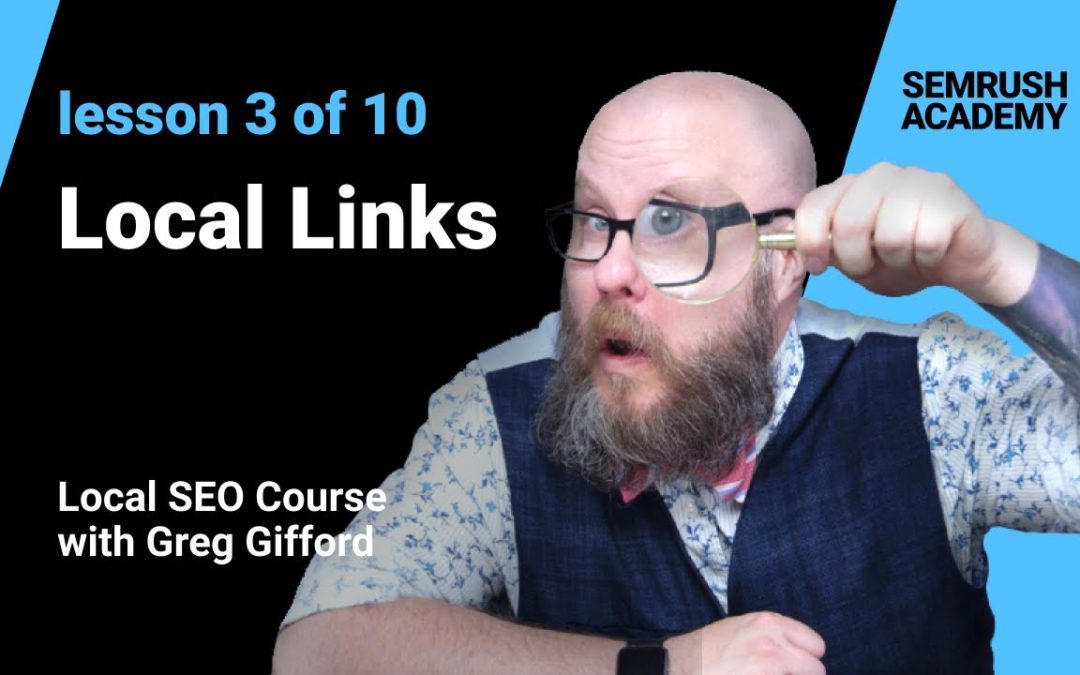Find out here what exactly Google is looking for and how you can build links that work.
Watch the full course for free: https://bit.ly/2Zgtu2P
0:33 How Google’s local algorithm looks at links
1:31 Nofollow links work in local SEO
1:39 Perceived authority of a site does not matter in local SEO
2:18 Low authority is typical for local sites
3:57 Easy ways to build local links
3:58 Local meetups
4:34 Event sponsorships
4:59 Find local bloggers and get them to write about you
5:10 Ask your employees what they do in their free time
5:26 Neighborhood watch sites
5:44 Use Google searches
6:26 Find unique links
✹ ✹ ✹ ✹ ✹ ✹ ✹ ✹ ✹ ✹ ✹ ✹ ✹ ✹ ✹ ✹ ✹ ✹ ✹ ✹ ✹ ✹ ✹ ✹ ✹
You might find it useful:
Apply your newly acquired knowledge by practicing with SEMrush and build up your real-world skills.
Go to Backlink Analytics:
➠ https://bit.ly/2LCQTUa
Go to Bulk Analysis:
➠ https://bit.ly/3bIoCq0
Learn how to improve your website’s visibility locally, globally, and on mobile searches in our free course:
➠ https://bit.ly/2WJBxDF
✹ ✹ ✹ ✹ ✹ ✹ ✹ ✹ ✹ ✹ ✹ ✹ ✹ ✹ ✹ ✹ ✹ ✹ ✹ ✹ ✹ ✹ ✹ ✹ ✹
Links have always been the most weighted ranking factor in Google’s traditional algorithm, and they’re incredibly powerful in Google’s local algorithm too.
Google looks at links like popularity votes. Ideally, the best sites will have the most inbound links pointed towards them, since other sites will link to the worthy content.
Google’s local algorithm looks at links differently than its traditional algorithm. Most local business websites operate on a much smaller scale. The majority of local business sites only have a few hundred linking domains – sometimes not even 100.
In the traditional algorithm, it’s important to acquire links from sites with high authority that are relevant to your business. Because local businesses operate on a smaller scale, the requirements aren’t so stringent.
In Local SEO, the important factor is that the link comes from a local business or website. Sure, industry-relevant links are still important and still carry value, but local links move the needle more than anything else.
In Local SEO, we don’t care if a link is follow or nofollow. If you’re newer to SEO, there’s a special directive included in the link code that tells Google to pass value with the link – a “follow” link – or to simply crawl the link without passing value – a “nofollow” link.
Traditional SEOs avoid nofollow links – but in Local SEO, they’re just as valid. Yes, you heard me right – nofollow links still work in Local SEO.
We also don’t care about the perceived authority of a site. Every link tool includes some sort of authority metric that relates the associated “value” of the site the link is coming from. Big sites with lots of authority have a higher authority score, and each link tool has a different name for the value. With SEMrush, it’s easy, ’cause the score is called the “backlink authority score”.
While the traditional SEOs are out scrambling to try to get links from really high authority sites, all of us in Local just sit back and laugh as we rake in links from low-authority sites.
Now, I’m not saying we get links from spammy sites – but, typically, local sites don’t have much authority. They don’t have a ton of other inbound links, they don’t have tons of awesome content, and sometimes the sites even look a little ugly.
I’ve been calling local links “crappy church links” for years. A church link is an awesome hyper-local link, but typically church sites have low authority scores in link tools – so traditional SEOs would say they’re crappy links.
Because of that fact, they’re harder to reverse engineer. As you start to grab more local links and gain more visibility in local searches, your competitors will jump to analyze what you’re doing. When they run your links through a link tool, the links will all appear to be low-value links, and since your competitor doesn’t know Local SEO, they’ll think your links suck and move on to other areas, never realizing what they’ve missed.
If you get involved in the local community, building local links is actually incredibly easy. Many businesses can find local link opportunities related to things they’re already doing in the community, or through local relationships they already have.
When you’re ready to go out and build some local links, start by checking your competitors’ links. Jump into SEMrush and download a list of your inbound links and a list for each of your major local competitors. Compare your links to what your competitors have, paying special attention to the links that they have, but you don’t.
If someone’s linking to your competitor, it’s likely very easy for you to get a link from the same site. This shouldn’t be your only strategy, because you need unique links to pull ahead in search results – but it’s a great starting strategy to level the playing field.
#LocalSEO #SEOcourse #Backlinks #SEMrushAcademy
source

